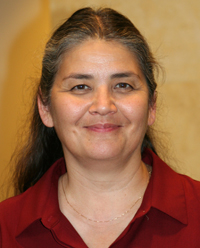Five Questions with Casey: Barbara Squires on Social Sector Leadership


As director of Leadership Development at the Annie E. Casey Foundation since 2010, Barbara Squires oversees an array of initiatives aimed at increasing the pool of diverse leaders equipped to improve results for children, families and communities. Among these efforts is the Children and Family Fellowship, which celebrates its 20th anniversary this year and recently launched a new class of 16 Fellows. Before joining Casey in 2007 as a senior fellow, Squires was assistant commissioner for maternal and child health at the Baltimore City Health Department. In 22 years with the agency, she played a key role in reducing substance abuse and childhood lead poisoning and improving maternal and child health.
Q1. What is the history of the Fellowship, and how has it evolved over time?
We launched in 1993 to augment the Foundation’s grant making. We thought about what it would take to change how the leaders of big public systems and nonprofits interact with kids and families. We wanted to help mid-career professionals headed toward influential senior leadership positions adopt a results focus. Initially, we used a residential model in which participants had to step away from their jobs and homes for a year to become immersed in the program. But after the sixth class, we revisited our approach. We knew that a lot of amazing people wouldn’t be in a position to leave their work and families. So we adopted a 20-month model in which the Fellows live and work on their home turf but join us for 10 four- or five-day executive seminars about every other month. This model gives Fellows an opportunity to apply what they are learning from the seminars and their peers in real time.
Q2. What is the process for choosing participants, and what do you look for in potential applicants?
Candidates must have at least 10 years of experience in the human services field and show a trajectory of increased leadership over time. Beyond that, we look for folks who demonstrate “hunger, weight and speed.” They are passionate and deeply committed to improving outcomes for kids and families; have gravitas and a deep knowledge of their field; and are quick to learn, analyze, act and respond to changing conditions. The successful candidates emerge through a lengthy application, review and interview process. For example, this year we started with 200 applications and finished by selecting 16 leaders.
Q3. What kind of an impact have Fellows had on the people and places Casey’s work targets?
Our Fellows have spearheaded efforts benefiting children and families across sectors. For example, Molly McGrath Tierney, who heads the Baltimore City Department of Social Services, has implemented reforms significantly reducing the number of kids coming into the city’s child welfare system while increasing the number of adoptions so that more kids are finding permanent lifelong families. Another example is Dan Cardinali, president of the national nonprofit Communities in Schools, who has developed a whole range of school-based supports that help young people facing serious challenges remain in school and go on to graduate.
Q4. The Fellowship is often described as a lifelong learning experience, with Fellows staying in contact after the program. How does this happen?
We created a Fellowship Alumni Network to help participants stay connected to each other, program faculty and the Foundation, and we hold gatherings twice a year to bring all the classes together. Fellows quickly bond with the members of their own class, but the network helps them form ongoing ties with those from other classes as well. The gatherings help them not only to reconnect and consult with each other about their work but also to continue to build their skills and competencies. We have 109 Fellows from across the nine classes, and we usually have at least 70 percent attendance at any given gathering.
Q5. What is distinctive about the Fellowship compared with other kinds of leadership development programs?
This program is first and foremost about results-based leadership, not just individual transformation. People often come out feeling like they are a different kind of leader than they were when they came in. But the real mark of success is that they can execute their leadership in a way that produces results on behalf of the kids and families that they serve. They do end up implementing practices, policies and system reforms that result in a change for the better for folks in the systems in which they work.





